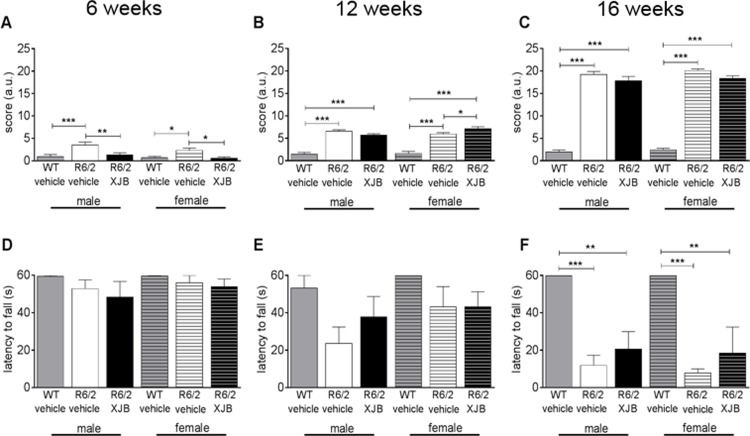Fig 6. Mice were assessed on the SHIRPA (A, B, C) and hangwire (D, E, F) tests at 6 (A, D), 12 (B, E) and 16 (C, F) weeks of age.
At 6 weeks of age, treatment with XJB-5-131 significantly reduced the deficit seen in vehicle-treated R6/2 mice (A). SHIRPA scores were higher in all R6/2 mice relative to WT mice at 12 (B) and 16 (C) weeks with no beneficial treatment effect at either age. There were no differences in hangwire scores at 6 (D) or 12 (E) weeks, but all R6/2 mice had shorter hangwire latencies relative to WT mice at 16 weeks (F). However, the impairment was reduced in XJB-5-131-treated R6/2 mice of both sexes, suggesting a slight improvement of phenotype (F). * p<0.05, ** p<0.01, *** p<0.001. Data are mean ± SEM. Mouse numbers: 6 weeks, WT male, WT female, R6/2-Veh male, R6/2-Veh female, n = 8. R6/2-XJB male, n = 7; R6/2-XJB female, n = 9. 12 weeks, all groups n = 6. 16 weeks, all groups n = 4.

